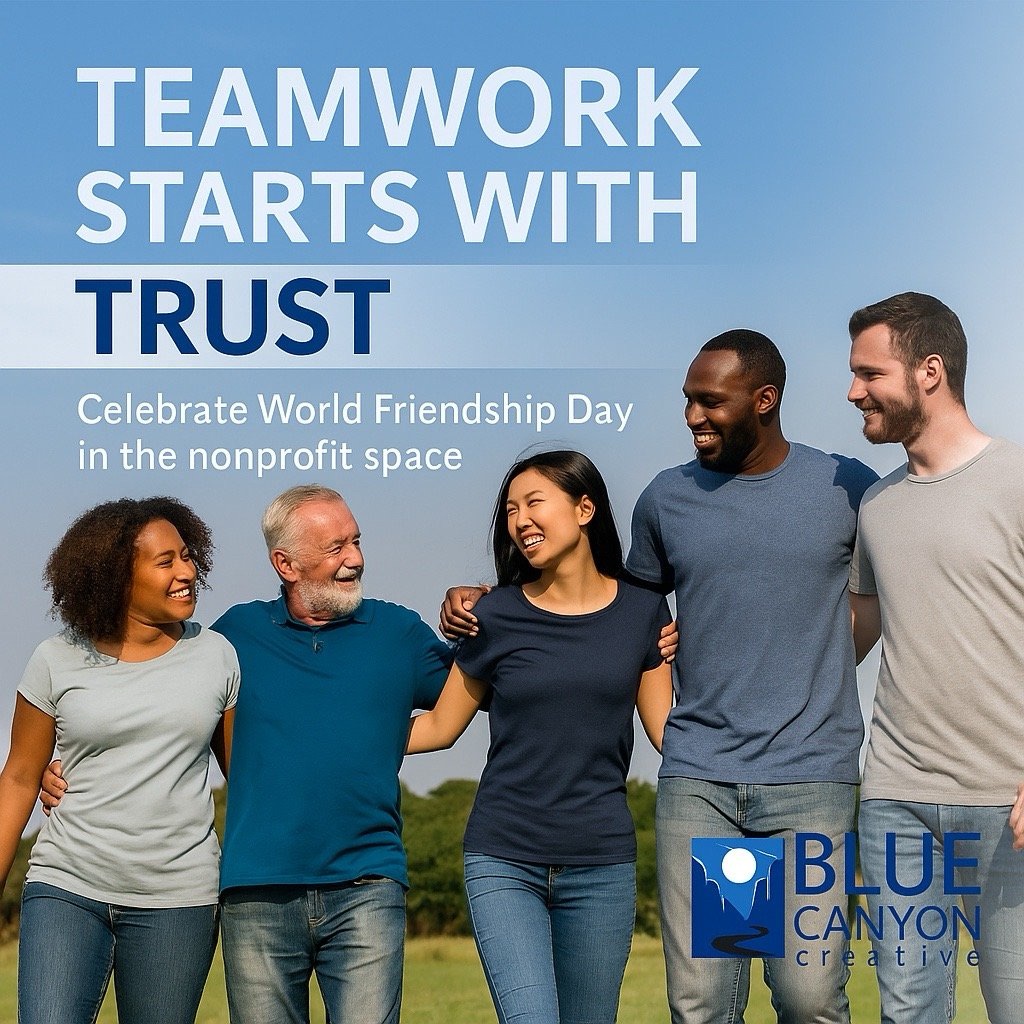Team Compassion: Celebrating World Friendship Day (August 3)

When we think of “friendship,” we often picture backyard barbecues, long phone calls, or maybe a childhood bond that’s stood the test of time. But friendship can also show up in the conference room, on a Zoom call, or side by side in a community cleanup. It shows up in the quiet moments of shared purpose and the hard conversations that lead to real change.
World Friendship Day, observed on August 3, is a chance to reflect not just on personal friendships—but on the friendships that form within our organizations, coalitions, and teams.
And if you run or lead a nonprofit, friendship might be the missing piece in your team culture.
Friendship in a Nonprofit Context? Absolutely.
No matter the size or scope of your nonprofit, the teams that function best have this in common:
They treat each other with compassion, curiosity, and trust.
I’m not talking about forcing “family culture” or asking staff to sacrifice boundaries. Friendship in the workplace isn’t about oversharing or being besties with every board member.
Instead, it’s about building a foundation of trust, kindness, and shared humanity.
1. Leading With Compassion (Not Just Deadlines)
Leadership can be lonely—but it doesn’t have to be cold. One of the most effective ways to build friendship-like trust within your nonprofit is to lead with compassion.
That means:
- Checking in before checking off: Before launching into your task list in a team meeting, ask how people are doing—genuinely.
- Being flexible when life happens: A missed deadline doesn’t always mean laziness. Compassionate leadership gets to the root.
- Modeling emotional intelligence: When leaders show vulnerability, others feel safer bringing their full selves to the mission.
Friendship thrives where people feel seen—not just used for output.
2. Building Trust Through Small, Intentional Actions
You don’t have to overhaul your culture overnight. Even small, intentional gestures can build workplace trust over time.
Try these:
- Celebrate wins—big or small: A quick “thank you” Slack message or handwritten note can go a long way.
- Be consistent: Say what you’ll do, and do what you say.
- Create low-pressure social moments: Virtual coffee breaks or team walks during retreats allow trust to grow naturally.
People remember how you made them feel. That’s the heart of team friendship.
3. Hiring for Mission and Chemistry
Friendship in a team doesn’t require identical personalities—but it does require values alignment.
When building your team:
- Look for soft skills: empathy, listening, collaboration.
- Include value-based questions in interviews: “Tell us about a time you advocated for someone else.”
- Prioritize culture contribution, not just culture fit.
When people are aligned on purpose and treated with mutual respect, friendships form organically—no pizza parties required.
4. Encouraging Healthy Conflict and Honest Dialogue
Let’s be real: friends don’t always agree. And great teams shouldn’t either.
But when a team is built on friendship-like trust, disagreements don’t become disasters.
- Make it safe to question ideas, not people.
- Normalize giving and receiving feedback with care.
- Train staff and volunteers on compassionate communication.
Conflict doesn’t have to be a threat. In a culture rooted in friendship, it becomes a pathway to clarity.
5. Embedding Friendship into Your Team Culture
Friendship can’t be forced—but it can be fostered.
Some of the most effective nonprofits we’ve worked with embed this mindset into their everyday work:
- Core values that include compassion, curiosity, or trust
- Onboarding that encourages human connection, not just procedures
- Leadership that views team wellness as a strategic asset
When you build a team culture where friendship is possible, retention goes up, burnout goes down, and your mission grows stronger.
What Friendship Says About Your Mission
Whether you’re working in environmental justice, cultural preservation, education, or aid—your mission is inherently human.
And when your team culture reflects that same humanity, your external messaging becomes more believable. Your donors feel it. Your volunteers feel it. Your community knows that what you stand for is real.
So this World Friendship Day, take a moment to ask:
- -Are we treating each other with compassion?
- Are we creating space for connection—not just correction?
- Are we building a culture where trust is more than a buzzword?
If not, it’s never too late to start.
Bonus: A Friendship-Inspired Internal Campaign Idea
Want to celebrate World Friendship Day with your staff or volunteers?
Try this:
Launch a “Kind Words Chain”: Encourage each team member to write a kind, specific note to another teammate. Post them on a shared board (virtual or in-office). Watch the ripple effect.
A little kindness goes a long way—and a culture of trust starts with one moment of connection.
Final Thoughts
I believe that your team culture is your brand. How you show up internally shapes everything externally.
This World Friendship Day, let’s celebrate more than a Hallmark holiday. Let’s celebrate the nonprofit leaders who choose compassion, connection, and trust as part of their daily mission.
Because when friendship is part of the foundation, your whole mission stands stronger






